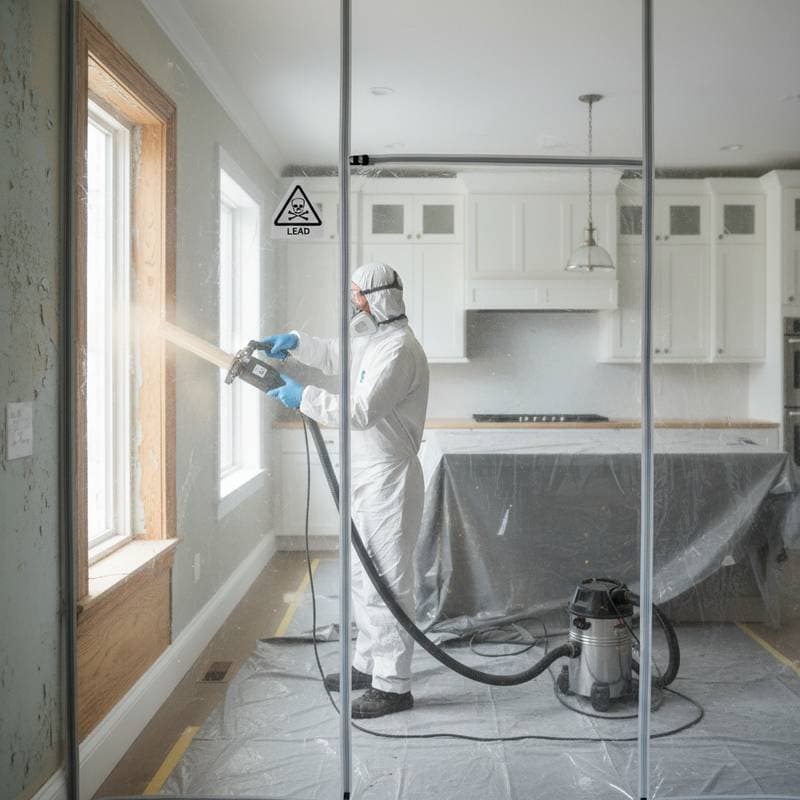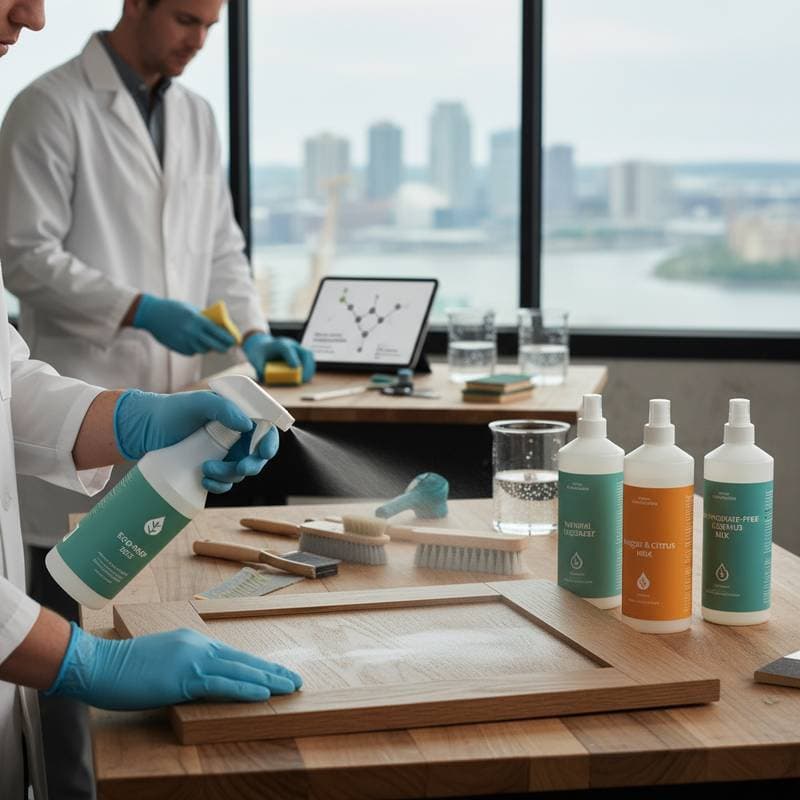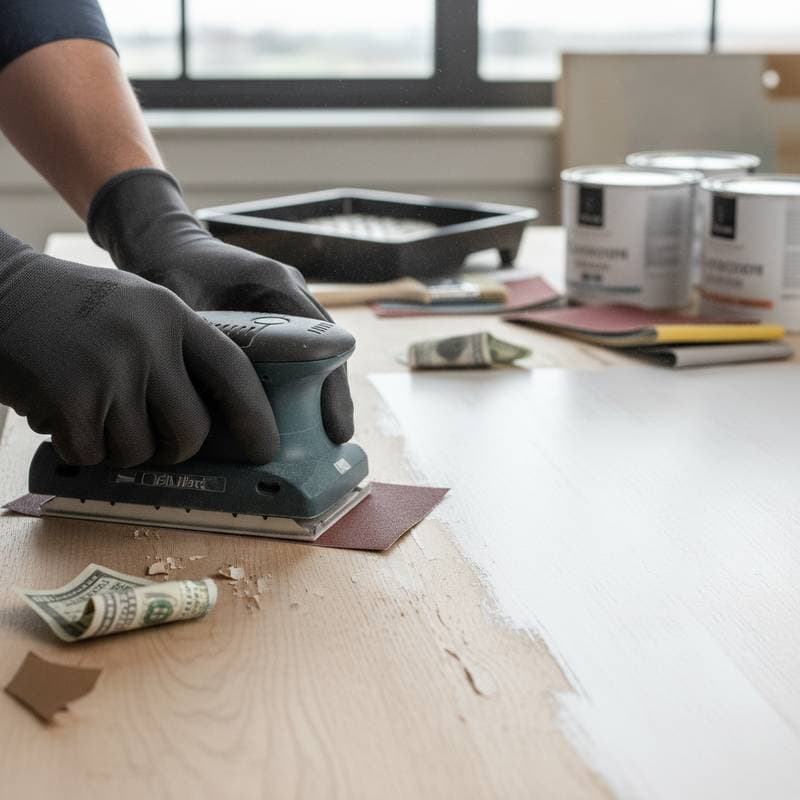Avoid This Costly Sanding Mistake on Cabinets
Cabinet refinishing offers an affordable way to refresh a kitchen or bathroom without the expense of full replacement. Proper sanding stands as the critical step that determines whether the project yields a professional finish or demands expensive corrections. Homeowners often overlook the nuances of surface preparation, resulting in issues such as peeling paint, uneven surfaces, and material waste. One overlooked sanding error can lead to rework costs reaching $800, including labor and supplies. By grasping the root causes of these problems and adopting precise techniques, individuals can secure durable results while staying within budget.
Understanding the Expenses of Inadequate Sanding
Inadequate surface preparation causes finishes to bond poorly, leading to defects like bubbling, cracking, or peeling over time. Remedying these flaws typically involves removing all layers, sanding anew, and applying fresh coats. Correction expenses generally span $500 to $800, varying with the damage scope and need for expert intervention.
Homeowners may view skipping thorough sanding as a shortcut to save effort, yet the eventual financial toll proves otherwise. A strategic focus on the elements driving sanding costs enables prevention of such setbacks from the outset.
Overview of Cabinet Sanding Expenses
Sanding costs for cabinets typically range from $200 to $600 for a small to medium-sized kitchen. Projects involving larger or intricate cabinetry may climb to $800 or higher, particularly with professional services. When paired with painting or staining, overall refinishing expenses can extend from $1,000 to $4,000, influenced by material choices and finish standards.
Expense Ranges by Project Size
- Small cabinet set (6 to 10 doors): $200 to $400
- Medium cabinet set (11 to 20 doors): $400 to $800
- Large cabinet set (21 or more doors, or custom elements): $800 to $1,500
Breakdown per Square Foot
- Materials: $1 to $3 for sandpaper, tack cloths, and cleaning agents
- Labor: $3 to $6 based on surface condition and accessibility
- Preparation and cleaning: $1 to $2 for degreasing and dust elimination
- Repairs and priming: $2 to $4 for addressing damage or irregularities
Key Influences on Sanding Expenses
Multiple factors shape the overall cost of sanding and preparation. Awareness of these allows for more precise budgeting and avoidance of excess outlays.
Cabinet Material and Existing Finish
Hardwoods such as oak or maple demand greater sanding than softwoods or laminates. Glossy or oil-based finishes frequently require chemical stripping prior to sanding, increasing both time and expense.
Design Complexity
Flat panels sand easily, whereas detailed elements like trims, grooves, and moldings necessitate manual effort or specialized tools. Increased intricacy elevates labor demands through the need for meticulous handling.
Surface Condition
Existing issues like peeling paint, scratches, or moisture damage can extend preparation by twofold. In severe cases, sanding proves insufficient, calling for complete stripping.
Tools and Methods
Selecting improper sandpaper grits risks surface harm; coarse grits gouge the wood, while omitting finer passes leaves scratches. Experts employ progressive grit sequences and vacuum systems to produce a flawless base for painting.
Hourly Rates and Location
Professional charges differ by region, with higher living costs correlating to elevated fees. Expect rates of $50 to $75 per hour from a skilled cabinet preparation specialist.
Expense Breakdown by Service Tier
| Service Type | Basic Range | Standard Range | Premium Range | Key Differences |
|---|---|---|---|---|
| DIY Sanding Only | $100 to $300 | $300 to $500 | $500 to $700 | Varies with equipment, supplies, and expertise |
| Professional Sanding and Priming | $400 to $800 | $800 to $1,200 | $1,200 to $1,800 | Encompasses dust management and fixes |
| Complete Refinishing | $1,000 to $2,000 | $2,000 to $3,000 | $3,000 to $4,000 | Covers sanding, priming, application, and sealing |
The $800 Sanding Error and Its Impact
A frequent mistake costing $800 arises from neglecting grit progression or surface cleaning between stages. Residual dust contaminates primers or paints, fostering bumps and poor adhesion. Resolution demands full stripping, renewed sanding, and reapplication.
Additional pitfalls include:
- Applying incorrect grit levels: Coarse options scar the wood, fine ones hinder bonding.
- Overlooking degreasing: Accumulated oils from kitchen use clog abrasives and block adhesion.
- Excessive sanding on veneer: This erodes thin layers, revealing uneven bases that distort paint absorption.
- Ignoring dust clearance: Lingering particles mar smoothness, prompting further adjustments.
Each error extends labor hours and inflates material needs. Mitigation starts with methodical preparation and vigilance.
Long-Term Benefits and Return on Investment
Beyond aesthetics, thorough sanding enhances finish longevity, postponing upkeep expenses. Professional preparation yields superior durability and evenness. A meticulously prepped surface can prolong finish life by five to ten years, curbing ongoing costs.
Although DIY approaches cut initial outlays, flawed execution erodes those gains through repairs. Opting for expert preparation, despite higher upfront costs, safeguards quality and preserves cabinet worth.
Practical Ways to Control Costs
Reduce expenses on sanding and preparation while upholding standards through targeted actions:
- Handle preliminary cleaning and degreasing independently before engaging pros.
- Detach hardware and doors to streamline sanding access.
- Acquire supplies in larger quantities for savings.
- Time projects for off-peak seasons, like late winter or midsummer, to secure reduced rates.
- Narrow focus to visible exteriors, bypassing less-seen interiors.
Steps for Effective Budgeting
Begin budgeting by measuring cabinet surfaces to calculate square footage. Incorporate a 10 to 15 percent buffer for unforeseen fixes or complications. Obtain a minimum of three detailed quotes encompassing sanding, priming, and finishing. Scrutinize proposals to verify included preparations and specified materials.
For optimal timing, align sanding with quieter periods such as late winter or midsummer. This approach often yields competitive pricing and greater contractor flexibility, minimizing overall project costs.



